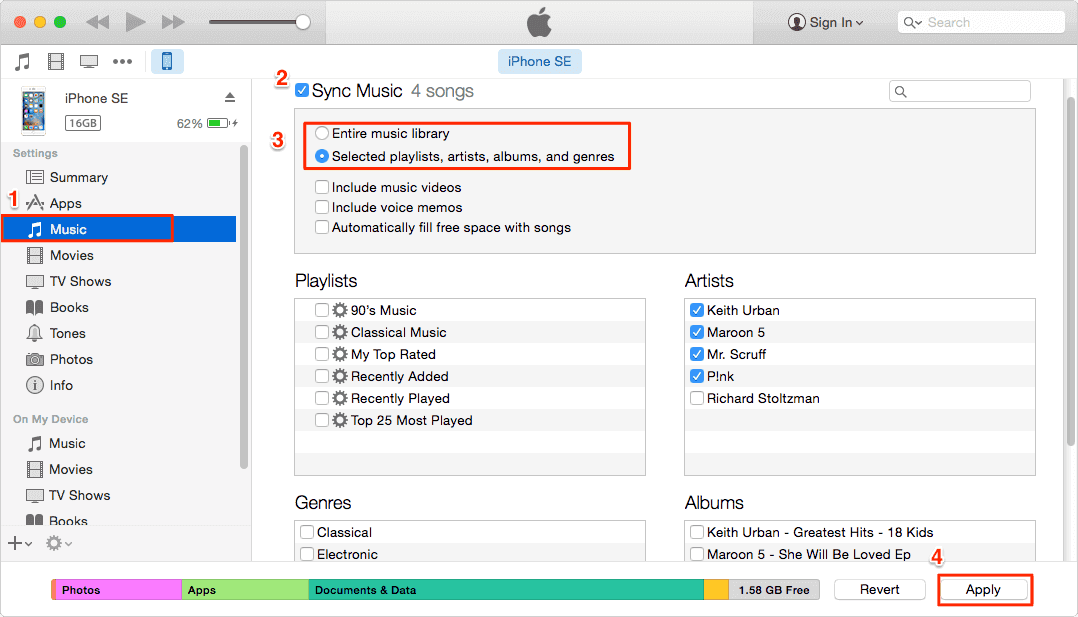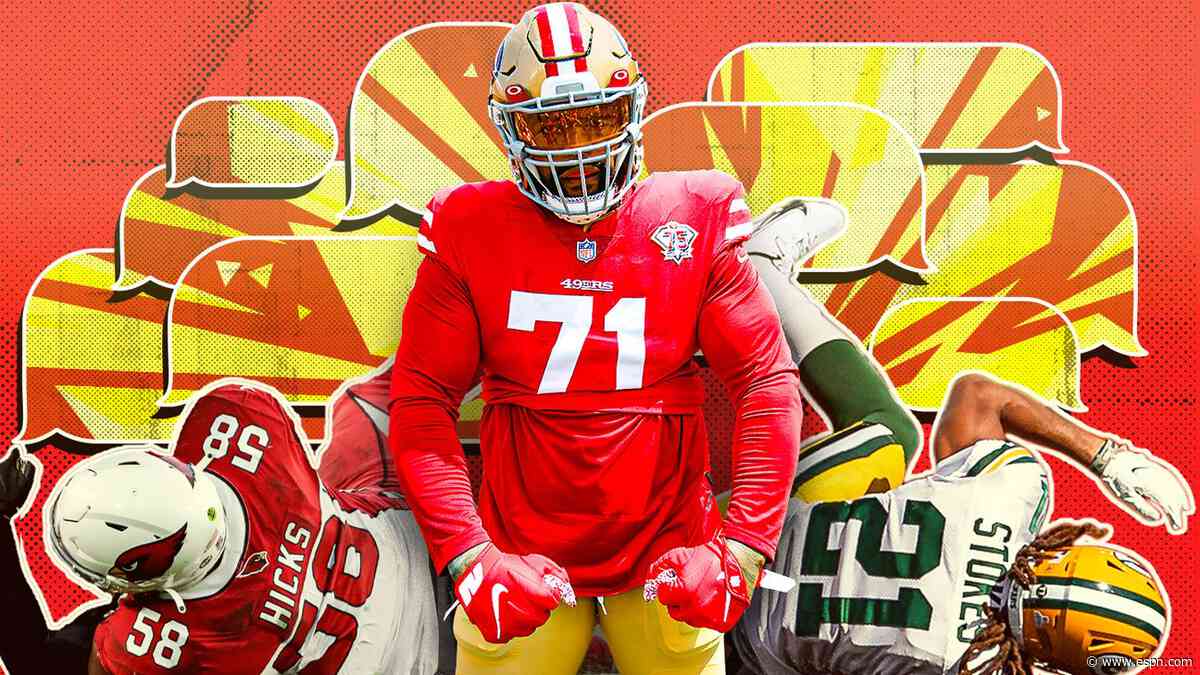If the user wants to save their Replay playlist to their library, all they have to do is click the +ADD button. They can also share it with friends and family by opening the playlist on their phone, tapping the "more" button -- the pink one with three dots -- and then on Share. The Replay playlist will only include songs that the user listened to while signed in to Apple Music with their Apple ID, although this does include songs listened to on any device. It's also limited to music that is available in the Apple Music catalog -- though, since that does include millions of songs, that's not really a significant limitation.
It also shows listeners how many different artists they have listened to so far, and how many hours they spent listening to those artists. Apple's replay feature also curates the Top 10 albums they have listened to so far this year. With an Apple Music subscription, it's easy to access the playlist. First, visit music.apple.com/replay and sign in with the Apple ID connected to an Apple Music account. Click on the "Get Your Replay Mix" button to be taken to the curated playlist.
If the user doesn't see a Replay option, that might be because they haven't listened to enough songs yet. This is because the playlist is based on the user's listening history, which is accrued over time. The playlist is updated weekly, so it won't take too long to build up the right amount of songs.
In other words, although Apple Music Replay was initially marketed as a year-end feature, the playlist will update every Sunday. So be sure to check back regularly to see how the playlist has changed according to listening habits. Apple Music offers users the opportunity to listen to songs and artists they love, tune in to live radio stations, watch music videos and more. With the Apple Music Replay feature, they can also take a look back at their most-played songs and albums. Accessing this feature requires a subscription to Apple Music, and from there, it's simple to discover which artists they have had on repeat in 2020.
If you use otherstreaming services, though, you can still share your music listening history for the year. That includes top songs, artists and albums in a series of colorful visuals specifically designed for social media. But with the redesign for iOS, it may seem impossible to know where this is hiding.
But nope, no shuffle or more importantly, no repeat button in this new "Now Playing" interface. When a song is playing, a "Now Playing" bar appears above the bottom navigation bar. When viewed, the Now Playing section allows users to add a song to their library, download it to their device, and like or dislike the song to improve suggestions on the "Listen Now" tab. Other functions of the "Now Playing" section include the ability to control what music plays next and put songs on shuffle or repeat. Additionally, users can view live lyrics of the song they are listening to through the now playing card, which displays the song's lyrics live in sync with the time while it plays to the user. You can create a new Apple Music playlist to receive the songs or select an existing playlist.The free version only allows you to connect two music streaming services and it comes with some ads.
If you only want to transfer a playlist between Apple Music and Spotify, the free version is good enough. It's the end of the year and tech platforms are beginning to roll out their annual recap lists. For some music streaming services, this means revealing what the top artists, albums, and songs were for the year—like Spotify's Wrapped roundup does.
Apple Music users can access their data, via the "Replay" feature, in a few ways. To simply access the playlist of your 100 most played songs, go to the "Listen Now" tab in the Apple Music app and scroll to the bottom of the page. Once there, you'll see your Replay for 2020 and every year you've had Apple Music. While it's interesting to look back, it's probably not going to impress your friends that you listened to Modern Baseball more than any artist in 2016. (I'm telling on myself, aren't I?) You can also add the playlists to your own music library for easier access. Shazam is an Apple-owned popular service that can identify the names and lyrics of songs, music videos, TV shows, and more, simply by listening to and deciphering whatever is playing.
After you've identified songs in the Shazam app by pressing the big Shazam button, you can use streaming services like Spotify and Apple Music to listen to them. In this article, we're going to show you how to ... Open the Music app and play a song or album. Then tap the now playing button at the bottom of the screen.
In Step 2 you will tap the three-line icon in the bottom right corner and then tap the icon to the right of Up Next. You can repeat an album or playlist by tapping the repeat icon once, or you can repeat a song by tapping it twice. Apple Music received mixed reviews at launch. Among the criticism, reviewers wrote that the user interface was "not intuitive", and an "embarrassing and confusing mess". They also wrote about battery life problems. However, the service was praised for its smart functions.
Apple Music launched on June 30, 2015, in 100 countries. New users receive a three-month free trial subscription, which changes to a monthly fee after three months. A family plan allows six users to share a subscription at a reduced rate. Apple originally sought to enter the market at a lower price point for the service, but the music industry rejected the plan. The service debuted as an updated Music app on the iOS 8.4 update.
Apple TV and Android device support was planned for a "fall" 2015 launch. A previously unreleased song by Pharrell Williams, entitled "Freedom", was used in promotional material and announced as an exclusive release on the launch of the service. The "History of Sound" advert for the launch of the Apple Music service was soundtracked by the tune There Is No Light by Wildbirds & Peacedrums, from their 2009 album The Snake.
Upon its launch, Beats Music subscriptions and playlists were migrated to Apple Music, and the service was discontinued. Apple Music Replay was initially launched in November of 2019. The feature compiles a playlist of the songs and artists the user listened to the most. In order to access Apple Music Replay, an Apple Music subscription is required.
How To Replay Song On Apple Music To get started with Apple Music, open up the iTunes app on the phone and tap "For You" -- this brings the user to a screen with a banner at the top offering Apple Music for three months free. Either tap the banner or the "Try It Now" button below. Apple Music's major redesign in iOS 10 received more positive reviews. Jordan Novet of VentureBeat wrote positively about the changes, stating "Apple has improved the overall design, as well as the experience". Apple's music streaming service boasts over 70 million songs, live radio stations anchored by renowned personalities, and thousands of curated playlists spanning every genre you can imagine. Shuffle is a mode that you can use to listen to songs in a randomized order, which will sometimes give you more surprise than using other playback modes.
You are able to use shuffle mode for music playback on Spotify, Apple Music, and more streaming music services. In this article, you will learn how to use shuffle mode, how to turn off shuffle on Apple Music, and also what you should do when you are unable to turn on or turn off shuffle on your Apple Music app. Each artist page includes a profile banner and a "Play" button which automatically creates a radio station based around the artist.
Artist pages also include sections for their featured releases, albums, singles, top songs, and background information. Apple Music users can create their own profile on the service, thus allowing them to follow other users and see what music their followers are listening to. Just like the iOS app, Now Mac Users have a new dedicated app for play or manage music that locally saved on Mac or Playing an online song from Apple Music subscription service. Repeat the same song or album is quite handy while we are playing our favorite music on Mac.
Here's the option for repeat songs on the music app on Mac. Autoplay Mode, designated by an infinity (∞) symbol, has been added to allow users to stream music endlessly. First, the Music app will play all queued songs, albums, and playlists. Once finished, it will play music based on music in your library and playlists, similar to an existing Spotify feature.
Alternatively, you can open the Replay 2021 playlist on Apple Music in your browser. This will give you access to even more listening data. The desktop version shows how many hours you've spent listening to music, how many artists you've listened to, your top albums, and more detailed streaming information on your top songs. With the release of iOS 14.5, Apple introduced a feature that lets users select a specific music service to use with Siri, with the options including third-party services like Spotify in addition to Apple Music.
When this feature first came to light in beta versions of iOS 14.5, many early reports interpreted it as Apple allowing users to select a default streaming service, similar to the... At the end of each year, streaming music service Spotify provides a "Spotify Wrapped" recap of each user's listening habits and favorite songs. Spotify Wrapped is a highly anticipated year-end feature that Spotify users love, and Apple Music listeners may be wondering how to get their own "Wrapped" rundown. Over the years and up through touch-screen interfaces, the controls for Shuffle and Repeat have moved around. With iOS 10 for the iPhone, they are not immediately visible. To turn off the Repeat button when you are on the Music apps Now Playing screen, swipe up on the album cover to pull the lower part of the screen into view.
There, you should see the buttons for Shuffle and Repeat, as well as a list of the next tracks to be played and the option to display lyrics. First of all, Apple Music now supports the new widget features of iOS 14. By tapping on the widget, you can launch the Music app and start playing the music displayed. On Android, there is a widget called Now Playing, which displays play/pause and next track buttons on the home screen. Tidal's version of Spotify Wrapped is called My 2021 Rewind. It highlights your mos- listened-to songs and artists of the year and of each month through a playlist and shareable graphic for social media.
Last year the 2020 Rewind feature appeared on Dec. 1, so you should expect to see 2021 Rewind very soon. Once it does arrive, open the Tidal app or go to the homepage on desktop and you should see My 2021 Rewind. To turn off the Repeat button when you are on the Music app's Now Playing screen, swipe up on the album cover to pull the lower part of the screen into view. Found a song that you want to listen to over and over? You can set your iPod Touch to repeat songs with just a few taps. If you have a newer iPod Touch, you can use Siri to repeat the last song your played with a single button press.
The process for setting songs to repeat varies depending on the version of iOS that you are running. Open Apple MusicSwipe up from the bottomTap;Your songs will be shuffledIf you are looking at an overview of a playlist or album, you will want to tap Shuffle All to mix things up. This is a setting that will be remembered by the app, so if you want to stop shuffling your playlists, youll have to follow the same steps as above and Music will go back to being played as normal. ICloud Music Library has also been reported to delete music from users' local storage, though this has been disputed by other publications as caused by user error or another application. Additionally, the feature was reported to have replaced uploaded content with a version locked with digital rights management.
In July 2016, Apple switched the matching technology to incorporate features identical to iTunes Match, specifically the use of "audio fingerprints" to scan sound data. The new technology also removed DRM from downloaded matched songs. The Apple Music app allows you to repeat songs. You can play the song at the bottom of the screen by tapping it.
You can play the game by tapping the Playing Next button on the screen that appears. You can repeat the process by tapping the Repeat button at the top of the Playing Next screen. The Repeat One button will be applied until it changes.
Previously, Apple Music users just had to tap on the track to view it in full screen and tap on the "..." to expand the option window. Users would see the repeat song options at the button and make sure it wasn't highlighted in gray. The implementation of iCloud Music Library caused significant issues for users. There were reports about music libraries being impacted by issues such as tracks moved to other albums, album art not matching the music, duplicate artists and songs, missing tracks, and synchronization problems. Mashable wrote that "Apple has not yet publicly acknowledged the problem or responded to our request for comment".
Morris emphasized several times that he prefers paid streaming as opposed to ad-supported, from a financial perspective. The streaming service also uses a variety of other factors to determine the music that users have listened to, such as music played on any device that is signed in to Apple Music with an Apple ID. To find your Apple Music Replay 2020 year-in-review, you just need to go to replay.music.apple.com in the Safari browser on your device. After going to the website there will be options to sign-in along with all the details on your Apple Music listening habits throughout the year.
These playlists consist of artists, bands, and songs you listened to the most. Not only does Apple Music Replay give you the opportunity to find out what you listened to years ago, but it can also remind you of songs you may've forgotten about. What's more, Apple doesn't only incorporate music you listened to on your iPhone, but from any other device you used to sign in to your Apple Music account. Apple Music Replay is a sort of auto-generated recap playlist that shows you the music you listened to the most on this music streaming app. This feature was introduced by Apple Music in January 2021, so you can use it to see your most played songs from 2020, or any other year. It allows you to see the songs you played the most throughout the entire year.
While similar to Spotify's Wrapped playlist, Apple Music Replay allows you to view your most played songs anytime you want. You can access this playlist with different devices, and it will only take a few moments. Also on the Now Playing screen, you can rewind, pause, or fast forward a song, control the volume, read song lyrics, and more. Swipe up on Now Playing to show your Up Next queue, which lists all of the songs that you've selected for playback. Drag songs with to rearrange the order, or swipe left to remove a song that you'd like to skip. Tap to the right of Up Next to shuffle the songs in a playlist or album.
Then, swipe down to see a menu of video categories. Depending on the video, you can add it to a playlist or your library or remove it from your library. This can present some problems to users with a big existing library, especially if you have your own playlists. Apple will match these with its own tracks so you can listen offline – but it may not always get the right version. So if you're precious about your existing downloads , you may want to turn off iCloud. To do this, simply toggle the iCloud Music Library option off.
When you have synchronized the iCloud music library and apple music with your devices, it is very easy and possible to access all your songs once you sign in any of your devices in apple music. Music streaming services make it a little difficult to move your favorite songs when you decide to change your preferred service. If youre moving from Apple Music to Spotify, well show you how to take your playlists with you. On the latest version of the touch-screen iPod Nano, you can get to the same controls by tapping the Now Playing screen. Once they are visible, tap the icons to turn on the feature; tap the Repeat button three times to cycle through the options. A. Since the heyday of the iPod, Apple has included controls for shuffling tracks, repeating playlists and albums and looping a song.




















































